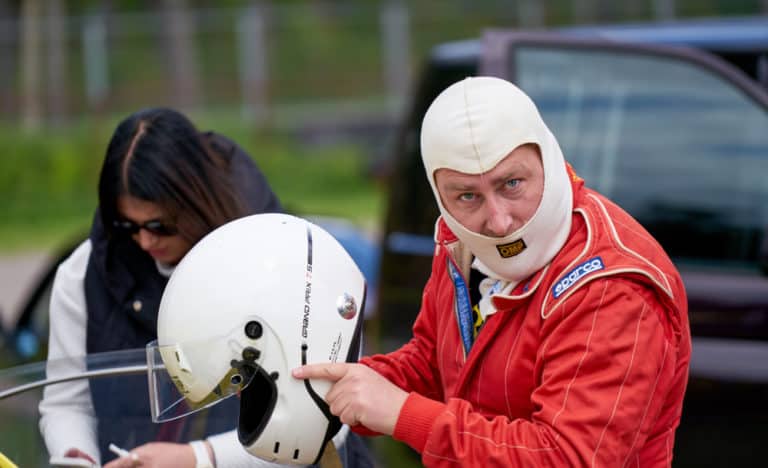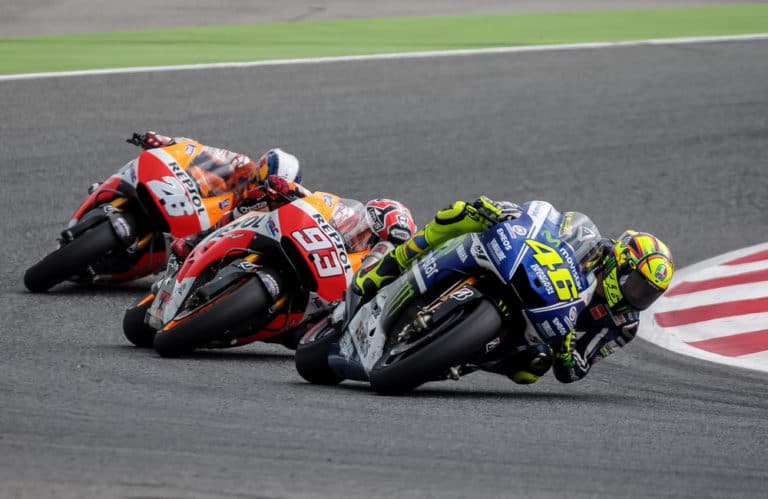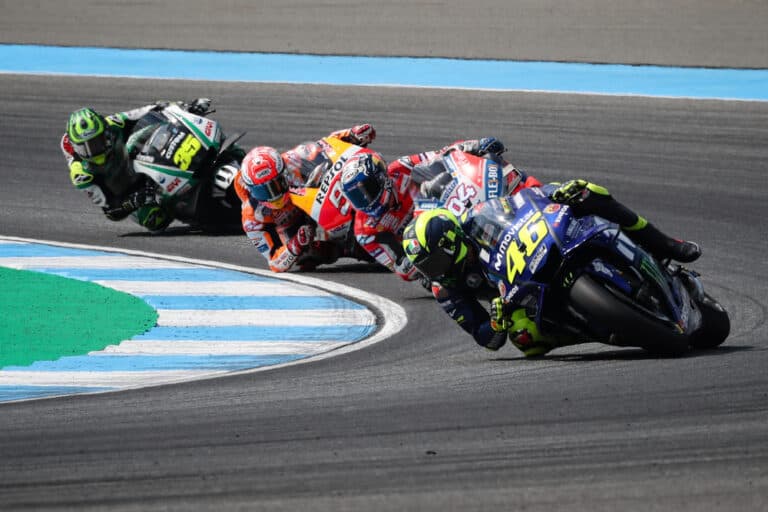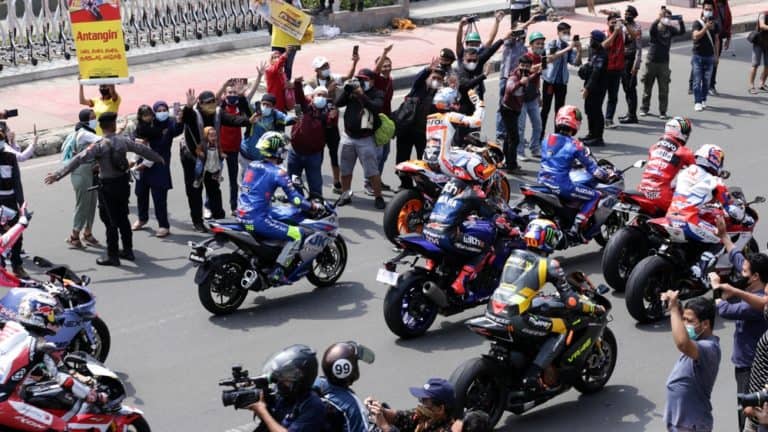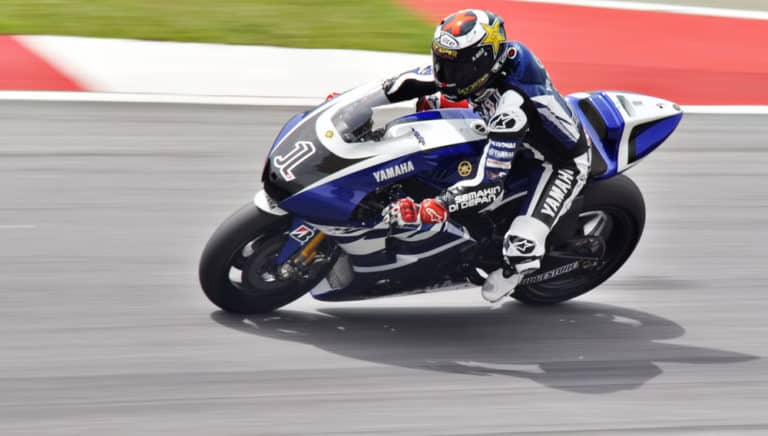Editorial credit: Hazrin CRIC / Shutterstock.com
MotoGP is a thrilling sport for both the racers and the spectators. The motorbikes fly by at lightning speed, skillful riders pushing their machines to the limit. And then there is the occasional crash, which is scary but spectacular to watch. The bikes are built for speed and are lovely to look at, so, as a motorcycle enthusiast, you might wonder whether those bikes are road legal.
MotoGP bikes are not allowed to ride legally on public roads and would most likely struggle to do so, even if they were allowed. These bikes are built for speed and are made to be as light as possible. Many components that would make a bike road legal are left out to achieve this.
MotoGP bikes are custom-built for racing; they are not road bikes that were modified for racing. Because of this, they have many added features that would not make them suitable for riding on public roads. Some manufacturers have used the chassis and engine used in MotoGP and converted it into a road-legal bike that was put on the market.
Is A MotoGP Bike Road Legal?
MotoGP bikes are designed with one purpose – to be fast and to win races. They are very light to make them as fast as possible. To make them as light as possible, manufacturers leave out many essential components that make a motorbike safe and legal to ride on a public road. The reality is that, without essential safety components, MotoGP bikes are not road legal.
MotoGP teams also fit several components to the motorbikes to boost the performance of the bikes to enable them to go faster. The problem is that some of these components would make the bike more dangerous when riding it at lower speeds on public roads. Unless these components are removed or replaced with road-legal ones, the bike cannot safely ride on a public road.
MotoGP bikes are further customized to suit each rider. A rider might get onto his teammate’s bike and be confused about how his teammate manages to go fast on that bike. Although customization does not make a motorbike illegal, the level of customization that goes into MotoGP bikes would make them extremely difficult to ride for ordinary motorcyclists.
What Do MotoGP Bikes Need To Be Road Legal?
To make the bikes as fast and competitive as possible for MotoGP racing, constructors omit several components from their bikes that are considered essential for safety on the road. Without these components, any motorbike could not be considered road legal in the USA:
- Headlight – An approved headlight with a high and low beam is an essential part of a road-legal bike, no matter where you live. Without a headlight, you would not be able to ride the bike at night or with poor visibility. There also needs to be a headlight indicator light visible to the rider, indicating when the headlight is on a high beam.
- Taillight – An approved, battery-operated taillight and brake light is also an essential component of a road-legal bike. These lights should be able to function on battery-only power for at least 20 minutes – a problem for a MotoGP bike that doesn’t even have a battery.
- Indicators – A MotoGP bike does not have to indicate when it will turn; it just follows the track, so indicators would add unnecessary weight and increase drag. Although hand signals could make it relatively safe to ride a motorbike without indicators, they are still required in all US states.
- Rearview Mirrors – Have you ever watched a MotoGP race and seen a rider looking over his shoulder to see where his nearest opponent was? That is because a MotoGP bike has no rearview mirrors to make it lighter and more aerodynamic. US law requires a motorbike to have at least one rearview mirror, but some states require two.
- Exhaust Pipes – Yes, MotoGP bikes have exhausts that only do part of the job that a road-legal bike’s exhaust does. Noise reduction is not a priority for MotoGP teams, so the exhausts are not muffled. A muffler would also marginally decrease the power of the MotoGP bike.
- Horn – A horn must be present on any road-legal motorbike. For obvious reasons, horns are not required in MotoGP, so teams leave them out from their bike designs to keep the bike lighter.
All these components, except for the rearview mirrors and exhaust pipes, would require extensive wiring on the bike and, of course, a battery to power it. As these would add unnecessary weight and some would make the bike less aerodynamic, these essential components are entirely omitted from MotoGP bikes.
Differences Between MotoGP And Road-legal Bikes
MotoGP bikes are purpose-built, almost entirely different from regular, road-legal motorcycles. Some essential components are omitted from MotoGP bikes to keep the weight down. Other non-essential components are also omitted, while other components are replaced with similar components that are not road-legal:
- Tires – One of the most apparent components that are not road-legal are the tires. US law requires motorcycles to be fitted with DOT-approved tires. Although the smooth racing tires are designed to provide superior traction, they need to be extremely hot to do so; something only achieved at very high speeds.
- Fuel Tank – The fuel tank on MotoGP bikes is positioned under the rider’s seat, not between the rider and the handlebars, as is the case on regular road bikes. US law requires fuel tanks used on motorcycles to be approved by the Department of Transport, which is not the case with MotoGP bikes.
- Steering – The movement of the handlebars on MotoGP bikes is minimal to give the rider better control at high speeds. Road-legal bikes require far more movement of the handlebars to go around sharp bends at a lower speed.
- Speedometer – MotoGP bikes have a screen where the speedometer would typically be on a road-legal bike. This screen displays some vital information that the rider might need during the race, but it is not a speedometer.
- Starter and Battery – MotoGP bikes do not have a starter or battery fitted. MotoGP bikes are started using a starting block, a machine with rollers inserted under the rear wheel, making the wheel spin to start the bike.
- Bike Stand – MotoGP bikes are not fitted with bike stands but have loose stands kept in the pits that keep the bike upright when it’s not out on the track.
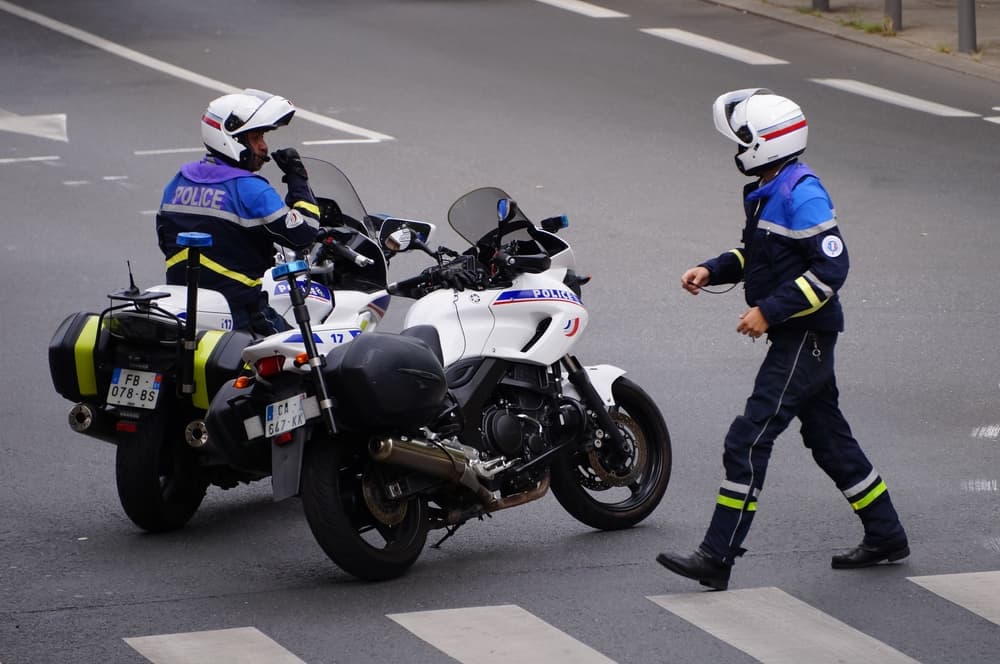
Conclusion
MotoGP bikes are designed for racing at high speeds. To keep the bikes as light as possible, many components that are considered essential on road-legal bikes are entirely omitted, while some others, like the tires, are replaced with components that are not road-legal. MotoGP bikes are, therefore, not at all road-legal.
References
- https://www.webbikeworld.com/street-legal-ducati-v4s-2-seconds-slower-than-2021-motogp-bikes/
- https://www.hotcars.com/street-legal-race-motorcycles-developed-for-track/
- https://www.quora.com/How-can-a-Moto-GP-bike-be-made-street-legal
- https://www.motosport.com/blog/how-to-make-a-dirt-bike-street-legal
- https://fb.watch/fpWJKAro0l/
- https://www.boxrepsol.com/en/motogp-en/what-are-the-buttons-on-motogp-bike-for/

